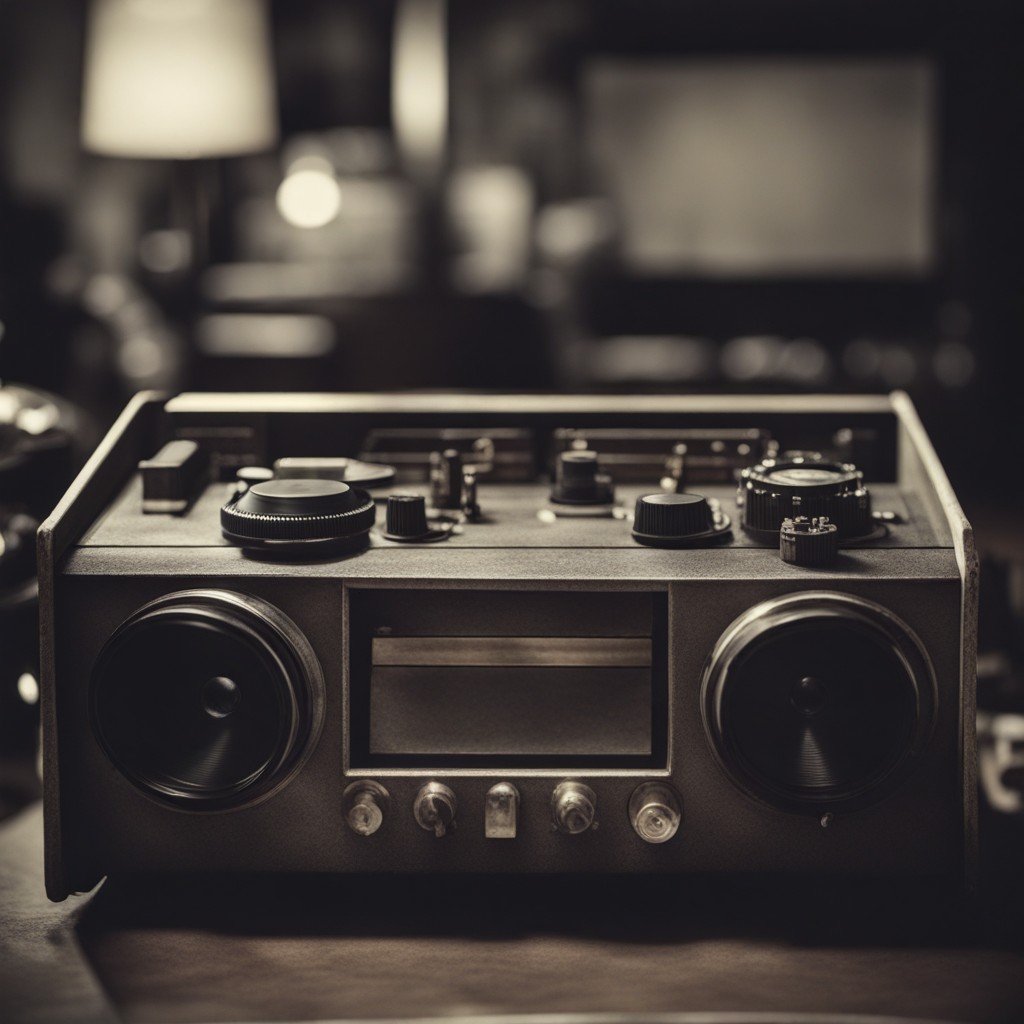RADIO IMAGING & COMMERCIALS
At CMB, we take pride in our comprehensive suite of radio imaging services, meticulously tailored to cater to a diverse array of station formats. Whether your station resonates with the tunes of Country, Hot Country, AC, or HOT/AC, our two decades of unwavering expertise in this domain empower us to craft radio imaging that flawlessly encapsulates the distinctive essence of your station’s format and the preferences of your discerning audience. Our extensive service portfolio encompasses an array of offerings, including captivating promos, top-notch commercial production, and dynamic sweepers, among others. As a testament to our commitment to your satisfaction, we extend an exclusive opportunity: three complimentary sweepers, each lasting 10 seconds, designed to provide you with a firsthand experience of our work. It’s our way of ensuring that you can gauge the caliber of our services before making any commitments. Step into the world of CMB, where precision meets creativity, and let your station’s identity flourish amidst the harmonious rhythms of excellence.
This is the Sound of Chec Music Beds
IMAGING – MORNING SHOW
Radio is the only form of media that can’t be interrupted by a pop-up ad.
IMAGING – SHOPPING CONTEST
Radio is the perfect way to relax and unwind after a long day. Radio is the perfect way to pass the time while driving or doing chores.
IMAGING – SUMMER FUN
R-A-D-I-O – Receiving And Distributing Information Overly
IMAGING – VALENTINES DAY
Radio imaging is like taking a picture with a camera that has no lens, only a microphone. Radio is the only way to listen to music without looking at your phone.
LADY ANT CONCERT PROMO – COMMERCIAL
Radio is the only form of media where you can’t skip the commercials. Radio is the only form of media where you can’t skip the ads.
POST MALONE PROMO – COMMERCIAL
Radio is the original podcast.
Both a radio and a commercial can be seen as a form of entertainment—a radio with its variety of programs and music, and a commercial with its clever and often humorous ads.
Radio Imaging refers to the production and use of audio elements, such as voiceovers, sound effects, music beds, and production techniques, to create a distinctive and branded sound for a radio station. It is an essential part of radio broadcasting that helps stations establish their identity, engage listeners, and maintain a consistent and professional image.
Here are some key components of radio imaging:
- Station IDs: These are short audio clips that identify the radio station by name and often include the station’s tagline or slogan. Station IDs are typically played at regular intervals to remind listeners of the station they are tuned into.
- Promos and Sweepers: Promos are short advertisements used to promote upcoming shows, events, or contests on the station. Sweepers are even shorter audio clips that usually contain the station’s name, slogan, and a musical or sound effect “sweep” to transition between songs or segments.
- Jingles: Jingles are catchy, musical pieces that include the station’s name and slogan. They are often used to reinforce the station’s brand and create a memorable tune that listeners associate with the station.
- Sound Effects: Sound effects can be used to enhance the overall listening experience, create a specific mood or atmosphere, and punctuate station IDs or promos. They can range from simple transitions to more elaborate soundscapes.
- Voiceovers: Professional voice talent is often employed to provide a consistent and recognizable voice for the station’s imaging elements. These voiceovers can deliver station IDs, promos, and other announcements in a clear and engaging manner.
- Production Techniques: Radio imaging often involves creative production techniques, such as mixing and editing, to create unique and attention-grabbing audio elements. These techniques can include layering, pitch-shifting, and using various audio effects.
Radio imaging plays a crucial role in branding and setting a station apart from competitors. A well-crafted and consistent imaging strategy can help build listener loyalty and make a station more memorable in a crowded media landscape.
Radio imaging is a fascinating aspect of radio broadcasting that involves creating audio elements to brand and identify a radio station. Here’s something interesting about radio imaging:
Radio Imaging Evolution: Radio imaging has come a long way from its early days. In the past, radio imaging was primarily done using live voiceovers and simple sound effects. However, with advancements in technology, particularly digital audio production and computer software, radio imaging has become highly sophisticated. Today, many radio stations use computer-generated voices, specialized sound design software, and advanced production techniques to create unique and memorable imaging elements.
One notable development in radio imaging is the use of artificial intelligence (AI) and voice synthesis technologies. Some radio stations now employ AI-driven voiceover software to create dynamic and customized imaging content. These AI voices can be programmed to reflect the station’s personality and style, providing a consistent and cost-effective way to produce imaging elements.
Additionally, AI can analyze listener data and preferences to tailor imaging content in real-time. For example, it can adjust the imaging messages, station IDs, or promotional content based on the time of day, listener demographics, or even the current weather conditions. This level of personalization and automation was challenging to achieve with traditional manual production methods.
Radio imaging continues to evolve as broadcasters strive to engage and connect with their audiences in innovative ways. The integration of AI and automation in radio imaging production is just one example of how technology is shaping the future of radio broadcasting.
Frequently Asked Questions
Radio imaging refers to the use of audio elements like voiceovers, sound effects, and music to create a distinctive and branded sound for a radio station.
Radio imaging is crucial as it helps establish a station’s identity, engages listeners, and maintains a consistent and professional image, setting the station apart from competitors.
Station IDs are short audio clips that identify a radio station by name and often include the station’s tagline. They’re important for reminding listeners of the station they’re tuned into and reinforcing brand identity.
Promos are short advertisements that promote upcoming shows or events, while sweepers are brief audio clips used to transition between songs or segments. Both help maintain station branding and engage the audience.
Jingles are catchy musical pieces that include the station’s name and slogan. They are used to reinforce the station’s brand and create a memorable tune associated with the station.
Professional voice talent is often used to provide a consistent and recognizable voice for station imaging elements, delivering station IDs, promos, and announcements in an engaging manner.
Sound effects enhance the listening experience, create specific moods, and punctuate station elements like IDs or promos. They range from simple transitions to more elaborate audio enhancements.
Production techniques involve mixing, editing, and creative audio manipulation to create unique and attention-grabbing imaging elements. Techniques may include layering, pitch-shifting, and using various audio effects.
Radio imaging is typically created by a team of audio producers, voiceover artists, and sound designers who work together to develop the station’s unique audio identity.
Effective radio imaging can increase listener loyalty, make a station more memorable, and contribute to a station’s overall success by differentiating it in a competitive broadcasting landscape.









